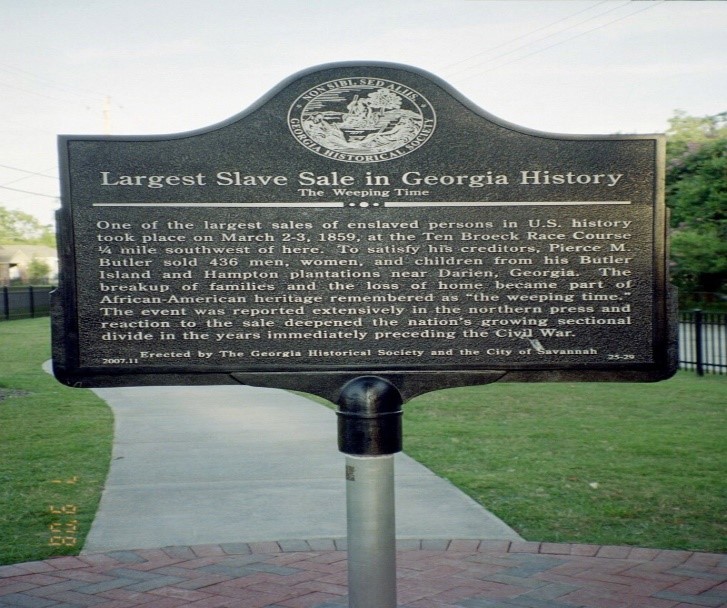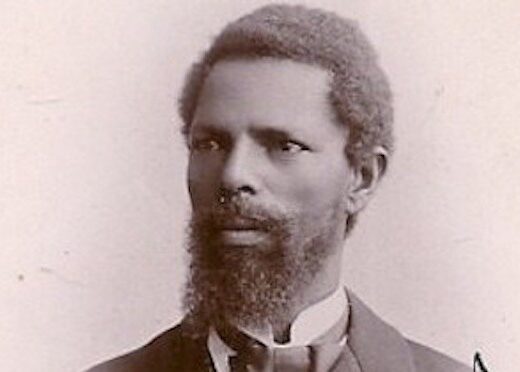
If you’re ever in Savannah and you see this sign, you are close to the spot where “the weeping time” happened.
This episode took place at a racetrack in Savannah, Georgia. During the two-day auction, rain fell continuously almost as though the heavens were crying. So, too, tears fell from several of the 436 men, women, and children who were auctioned off. The sale would thereafter be known as “the weeping time.”
The Slave-owner, Pierce Butler and his brother John, had inherited the family’s Georgia plantations some twenty years earlier. But Pierce had squandered away his portion of the inheritance, losing a rumored $700,000; and was deeply in debt. Management of Pierce Butler’s estate was transferred to trustees. The trustees sold off Butler’s Philadelphia mansion for $30,000 and other Butler properties. But it was not enough to satisfy creditors or ensure that Butler would continue to live in luxury. So the Georgia plantations and their “moveable” property,their slaves, were next.
The two-day sale netted $303,850, in 1859. The highest price paid for one family a mother and her five grown children was $6,180. The highest price for one individual was $1,750. The lowest price for any one slave was $250. Soon after the last slave was sold, the rain stopped. Champagne bottles popped in celebration. And Pierce Butler, once again wealthy, made a trip to southern Europe before returning home to Philadelphia.
There are no traces of the racetrack where this happened. The only monument to this piece of history is a steel marker a few miles outside Savannah, erected by the city and the Georgia Historical Society in 2007. The marker stands not at the actual site of the sale, which is now a lumber company next to an elementary school, but a quarter mile away in a tiny park.
Read more about it here: http://www.myajc.com/…/how-the-weeping-time-became-a…/npT93/



No Comments